Authors:
ABSTRACT
Aim
The present study aimed to evaluate the association between caries and oral health status, age, salivary cortisol levels, and parental education in children with and without prior dental caries experience.
Methods
An observational case-control study was performed including 122 children aged between 3 and 6 years who were clinically examined for caries experience using the sum of decayed, missing, and filled teeth in the primary (dmft index) and permanent (DMFT index) dentition. Oral health status was also evaluated using the Simplified Oral Hygiene index (OHI-S). Parents filled a questionnaire to provide information on other variables. Salivary cortisol levels were estimated 1 h after routine dental brushing.
Results
We found that dental caries experience was associated with cortisol level, plaque, age, and high calculus levels. High cortisol levels and age are important risk factors for caries development with odds ratios of 3.05 (95% CI: 1.84–5.06) and 1.59 (95% CI: 1.09–2.58), respectively. Multivariate logistic analysis showed that cortisol level and age were independently associated with caries presence. Caries experience was not associated with education of parents, feeding-hygiene habits of child or birth events.
Conclusion
The present findings support the hypothesis that caries is mainly correlated with high salivary cortisol levels. Dental caries experience in children was also positively
associated with tartar, plaque, and age.
PLUMX METRICS
Publication date:
Keywords:
Issue:
Vol.19 – n.1/2018
Page:
Publisher:
Cite:
Harvard: S. Caruso, R. Gatto, B. Cinque, M. G. Cifone, A. Mattei (2018) "Association between salivary cortisol level and caries in early childhood", European Journal of Paediatric Dentistry, 19(1), pp10-15. doi: 10.23804/ejpd.2018.19.01.02
Copyright (c) 2021 Ariesdue

This work is licensed under a Creative Commons Attribution-NonCommercial 4.0 International License.
